Elsa and A. Watson Armour Family: Elawa and Beyond
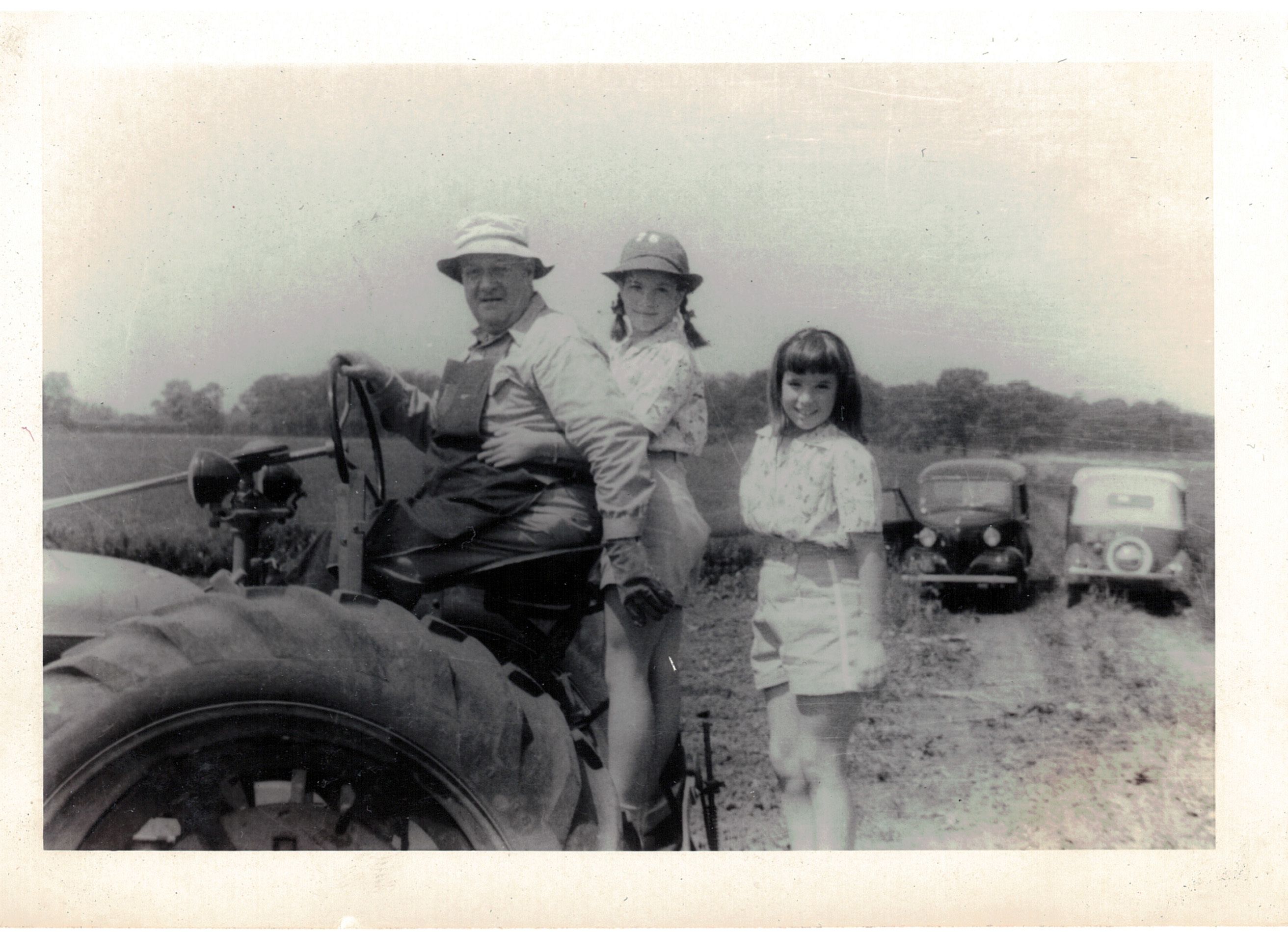
As you know, the Armour family has a deep connection to Chicago as one of the city’s foremost pioneers of industry. Several members of the family have been residents of Lake Forest.

It was Philip Danforth Armour who founded the Chicago-based meat-packing firm of Armour & Company. He grew up in a large family on a farm in Stockbridge, New York, where his education at the coeducational Cazenovia Academy was cut short when he was apparently expelled for the serious offense of riding in a buggy with a girl. Around age 20 in the early 1850s, P. D. Armour left New York and went west in the California gold rush. Like Levi Strauss, who began his dry goods business selling pants and other clothes to the miners, P. D. Armour quickly realized that there were more profitable opportunities in tending to the miners’ needs than in panning for gold himself. So he started a business supplying panning prospectors with running water to help separate the gold from the dirt surrounding it. Through this enterprise he made the seed money which he used to enter the wholesale grocery business, first in Cincinnati, where he met his wife, Malvina Belle Ogden, and then in Milwaukee. This was followed by grain and eventually by meatpacking.
His business became highly successful as a supplier of meat to the Union Army during the Civil War, when he made his first million by successfully predicting when the war would end and stocking up/selling accordingly. In 1867, Armour & Company was founded. Armour’s innovations in the industry included creating an efficient assembly line system in his factories, producing canned meat, and utilizing parts of the product that had previously gone to waste – he was known to claim to make use of “everything but the squeal.” He took advantage of the invention of refrigerated rail cars to sell to a new national market.

By the 1890s, Armour & Co. was not just the world’s largest meatpacker, but also handled a volume of wheat greater than any single company worldwide. This massive enterprise was a true family business. Philip Danforth Armour was one of eight children, including five brothers, most of whom were also involved in building the Armour commercial empire. Here, P. D. Armour is circled in light blue. Younger brother Herman, who helmed the New York enterprise and grew the grain business, is in purple, and Joseph, in green, held down Chicago before P. D. located there himself in 1875.
Older brother Simeon, in purple, ran Armour Packing Co. in Kansas City. The other older brother, Andrew Watson Armour is outlined in orange. He joined his brothers in leaving the old homestead in Stockbridge, New York and coming to the Midwest, where he took charge of the new Armour Brothers’ Bank in Kansas City. His sons Kirkland Brooks Armour (also your direct ancestor – he’s outlined in red) and Charles W. Armour (brown) entered the Armour packing house in Kansas City and became active managers there. Kirkland Brooks Armour also helped develop the Hereford brand of beef cattle in the U. S. by purchasing pedigreed stock from England to start herds on the Armour family farms in Missouri.
P. D. Armour’s sons, outlined in dark blue, were Jonathan Ogden Armour (left) and P. D. Armour Jr. (right). Philip Jr. was the heir apparent to Armour & Co., and followed in his father’s footsteps in terms of outlook and frugality but his tragic early death at age 31 left it all to J. Ogden Armour. J. Ogden’s education, like many of his contemporaries, had taken him from Yale to a year with a tutor in England, where he had become more interested in the life of a country gentleman than a life in business in the stockyards. However, he gamely took the reins, with nephews P. D. III and Lester, Philip Jr’s sons, and cousin Kirkland Armour’s sons A. Watson and Laurance joining him when they came of age.

P. D. Armour had settled his family on Prairie Avenue in Chicago in the 1870s, the most fashionable address of the day, but by the turn of the century the second and third generations of Chicago industrialists were moving north, to the Gold Coast and North Shore. In Lake Forest and Lake Bluff there were: J. Ogden Armour at Mellody Farm; P. D. Armour III, Philip Jr’s son, at Tangley Oaks, on Green Bay Road in Lake Bluff; Laurance H. Armour at Two Gables, on South Green Bay Road in LF, Lester Armour on Arbor Drive in Lake Bluff, and A. Watson Armour at Elawa Farm. A. Watson Armour was Laurance’s brother, J. Ogden Armour’s first cousin once removed, and P. D. Armour III and Lester Armour’s second cousin.

A. Watson Armour was born in 1882 in Kansas City to P.D. Armour’s nephew Kirkland and his wife Annie Hearns. He was named for his grandfather. He attended Phillips Academy at Andover, and started his career as a bill clerk in the Kansas City Armour plant around the turn of the century. He soon came up to Chicago and was made a director of Armour & Co. Here he met and married Elsa Parker in 1907. The Armours initially made their home in a town apartment on Lake Shore Drive.

In 1917, A. Watson Armour bought 128 acres of land west of Lake Forest from the Vickerman family. It fronted on Telegraph (now Waukegan) Road, around the corner from his cousin J. Ogden Armour’s Mellody Farm. He and Elsa called their new country home Elawa, combining the first two letters of her name and his initials. They hired Alfred Hopkins of New York, considered the leading expert in the country on estate farms, to build the farm complex. Each distinct farm operation was separated into different buildings and courtyards. Unlike some purchasing land out in the country at the time, the Armours were serious about the farm functionality of Elawa, and in Hopkins they found an architect who could unite beauty and practicality.

In 1918, the Armours engaged landscape architect Ralph Rodney Root to design their grounds. There was a large vegetable garden, fruit trees, and four cutting gardens, featuring lilies, zinnias, poppies, and prize-winning dahlias.
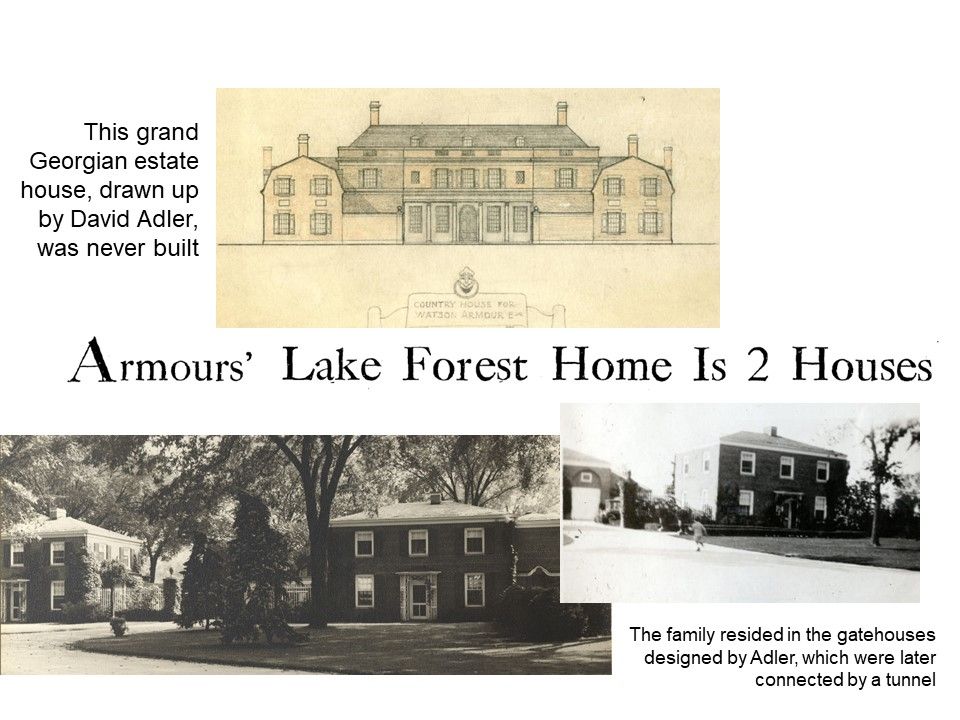
Also designing for the new Armour property was the architectural firm of David Adler and Robert Work, who drew up plans for outbuildings and the family’s residence. You can see the drawing of the grand Georgian house Adler envisioned above.
The timing of the Armours’ land purchase was not ideal for constructing a large estate. Building slowed significantly when the U.S. entered World War I in 1917. Adler’s more modest gatehouses were built first, and the family used those as a country residence during the war. Following the war, in the early 1920s, A. Watson Armour’s cousin J. Ogden Armour became overextended in his various business ventures. He suffered a significant financial reversal, which trickled down to the rest of the family and reduced the family’s influence at Armour & Company. By the late 1920s, only A. Watson and his second cousin Lester remained as directors, and shortly thereafter they resigned as well.
The Armours became used to country life residing in the more modest quarters of the gatehouses, even if it did have its quirks – mainly, that one had to go outside to get from one part of the residence to another – and so the grand Georgian estate house was never built.
Later, in the 1930s, an overlooked investment by J. Ogden Armour’s widow Lolita Sheldon reversed the family fortunes yet again, and A. Watson and other family members rejoined the leadership at Armour & Co for a time. In 1936 A. Watson and Elsa hired David Adler to design an underground tunnel to connect the two gatehouses, as well as make other improvements.
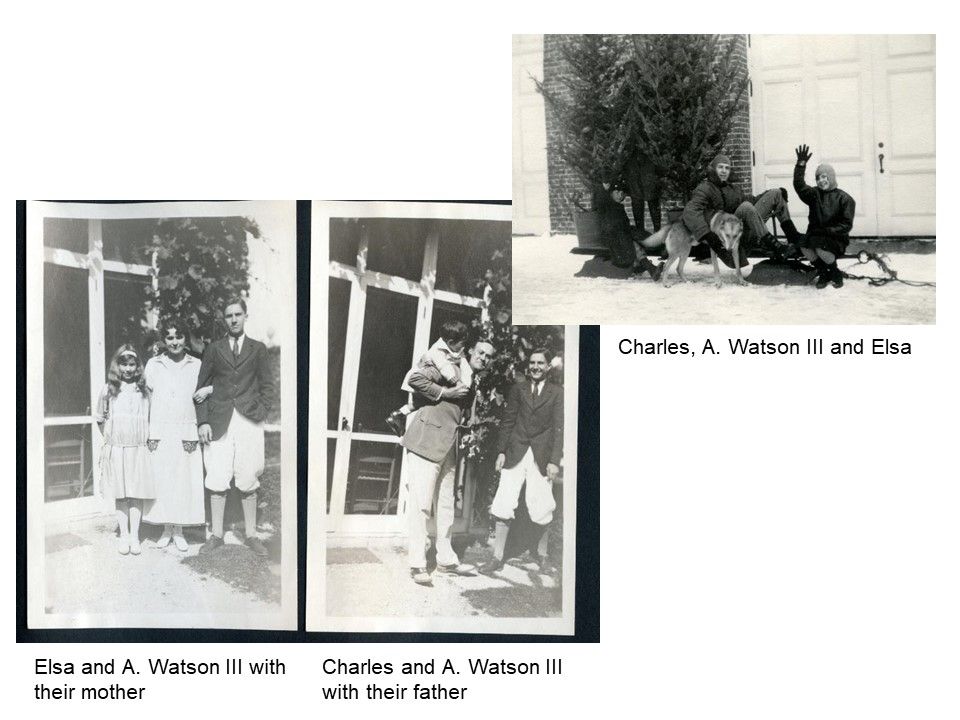
A. Watson and Elsa Armour had three children: A. Watson III, born in 1908; Elsa, born in 1911; and Charles Brooks, the baby, born 10 years later in 1921. The family maintained their apartment on Lake Shore Drive in Chicago, and came out to Lake Forest each June, returning to the city in October. Often winter holidays like Christmas and Thanksgiving were also spent at Elawa Farm, when the family enjoyed skeet shooting and sleigh rides around the property.

Though Elawa was a second home and a so-called “hobby farm,” where the family would ride and hunt and tinker, the Armours also considered it a serious agrarian pursuit. They hired an experienced staff, who lived on the farm year-round, to raise and care for their animals and cultivate their crops.
In addition to horses, the Armours kept cows, goats, and sheep, but the main focus was chickens, both laying hens and broilers. Fields to the west were devoted to corn and hay.
At the time, chickens were by far the most popular animal for the new but enterprising gentleman farmer to raise, requiring a comparatively small investment of money, time, and space, with many unusual types available to breed. David Adler designed a red brick chicken house for laying hens at Elawa. Around 1950, the Armours invested more in poultry, and an extensive broiler house was constructed south of the farm group, seen at bottom right. This could house over 25,000 broiler chickens.

You can see A. Watson Armour III pictured here in this daring photograph taken on the roof of Elawa Farm. He attended St. Mark’s School in Massachusetts and then Princeton where he was a fullback on the football team before he took a year off in 1932 to go on an extended hunting trip with his friend John Maclaren Simpson in Africa and India.

Elsa Armour is pictured here, with her baby brother Charles, her horse King, and a few of the family dogs. She attended Miss Porter’s School in Farmington before her debut year in 1930.

Like his older siblings, Charles Brooks Armour grew up closely with the animals out at Elawa Farm. You can see him pictured with the goats and with one of the many family dogs. Among others, the Armours raised pedigreed Irish Terriers in their kennels at Elawa. As a teenager, Charles was in charge of them, which you can see from the advertisement, which appeared for several weeks in the Lake Forester newspaper in 1937.
Charles also attended St. Mark’s and Princeton. In 1936, the family had a scare when St. Mark’s was struck with an attack of infantile paralysis in late May – all the boys were sent home, including Charles and his cousin Philip D. Armour IV, and Elawa was quarantined for two weeks. Fortunately Charles’ case was very mild and he quickly recovered.

In December 1931, Elsa Armour married Washington Irving Osborne Jr., known in the family as June. Winter weddings were fashionable at the time. The ceremony took place at St. Chrysostom’s Church in Chicago, which was crowded to overflowing with relatives and friends, not to mention a veritable bower of yellow chrysanthemums. The reception was at the Casino.
June grew up in Evanston, and was a graduate of Yale. For many years he was president of Cornell Paperboard Products in Wisconsin; he became a director of Pullman, Inc. in 1952, later serving as president and CEO.

The Osbornes lived in Lake Forest at 349 King Muir in the Deerpath Hill Estates neighborhood, in a house built in 1927. They put on an addition seen at right in the 1940s.

In 1936, A. Watson Armour III married Jean Shedd Schweppe, granddaughter of John G. Shedd, president of Marshall Field & Co., and daughter of Charles Schweppe and Laura Shedd of Mayflower Place, where the wedding was held in a small, intimate ceremony in the living room. You can see her stunning dress here.

A. Watson III and Jean lived in Lake Forest at 850 E. Deerpath. She was an accomplished tennis player as well as a major patron of the arts and music in the city. After working for Armour & Co., A. Watson Armour became president of Huck Manufacturing, a company based out of Detroit that produced metal fasteners for the aerospace and railroad industries. They had two children, Laura and A. Watson IV - Dan. Jean died at a very young age, only 48, in 1963. A. Watson III later remarried, to Sarah Wood Addington, the daughter of General Robert E. Wood, who was president of Sears Roebuck.

Charles Armour married Joan Monroe, daughter of the Walter D. Monroes, in 1946. The wedding ceremony was held at the Church of the Holy Spirit, attended by generations of the Armour family. According to newspaper reports, “The picturesque little church was filled to capacity and the lawn at its entrance was dotted with passers-by who had come to see the pretty young woman in her bridal regalia.” Their reception took place in the garden at the Monroe family’s farm, Whippoorwhill, off of Mellody Road in Lake Forest.

They lived in a Stanley Anderson house at 475 E. Westminster. Charles worked with his brother at Huck Manufacturing, as director of overseas operations. They were divorced in 1960.

Charles and Joan Armour had two children, Joan Elizabeth and Kirkland Brooks, who was named for his great-grandfather Kirkland – A. Watson Armour’s father.

Elsa and June Osborne had three daughters, Adrienne, Gwendolyn and Karen, who grew up amidst a slew of Armour cousins, second cousins and third cousins in Lake Forest. They all attended the Bell School, located adjacent to First Presbyterian Church, riding their bicycles in nice weather and carpooling with others in the neighborhood in the winter. Their Armour cousins also attended, although by Joan and Kirk’s time it had consolidated with the Day School and became Lake Forest Country Day.

For recreation after school and in the summers, the Osbournes and Armours went to the Winter Club, where they would play tennis, swim, compete in other sports like soccer, along with ice skating in the winter, of course. At the 1958 Winter Ice Carnival, Joan and Kirk Armour apparently took top honors in the costume parade, dressed as beavers.

The Osborne girls and Armour cousins grew up with their Armour grandparents close by. They could head west of Waukegan Road for a completely different experience than their own neighborhoods. Elawa Farm to them meant adventure: there they had the run of a large property. Their grandfather was always tinkering with a new gadget, and he loved to take his grandchildren around in the sidecar of his little scooter. The Armour grandchildren would run through and play hide and seek in the tunnels connecting the gatehouses, enjoy elaborate picnics, and visit the goat, Billy, who had a cultivated taste for cigarettes.
In 1953, A. Watson Armour passed away from a heart ailment. In addition to his work as a director of Armour & Co., A. Watson was a director of the Northern Trust Co., Commonwealth Edison, National Aluminate, and volunteered his time for years on the executive committee of the Chicago Council of the Boy Scouts of America.
After A. Watson Armour’s death, the family decided to sell Elawa Farm. In 1954, it was purchased by Lelia and Wallace Carroll, who followed in the Armours’ footsteps and called the farm “LeWa,” after their own initials.

The three Osborne girls, as well as Laura Armour, followed in their mother and grandmother’s footsteps in attending Miss Porter’s School, in Farmington, Connecticut after graduating from the Bell School. The school was founded in 1843 by educational reformer Sarah Porter, who insisted that her female students learn the sciences and pursue athletic opportunities in addition to the other more traditional subjects. As you can see from the bricks, four generations of the Armour family have attended Miss Porter’s.
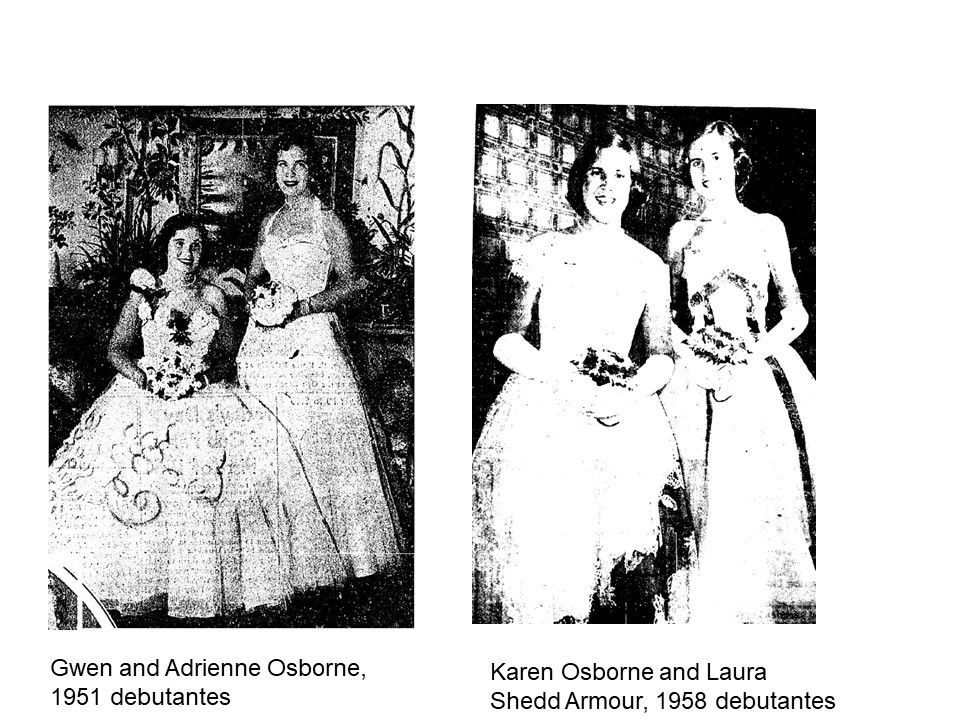
From Miss Porter’s, each of the Osborne girls went on to a different college: Adrienne to Sarah Lawrence, Gwen to Vassar, and Karen to Briarcliff. Adrienne and Gwen had their debut party together in 1951 and Karen and her cousin Laura Shedd Armour, born just a month apart, in 1958. Laura Armour attended the University of Geneva in Switzerland.

Adrienne was the first to be married, in 1954 at the Church of the Holy Spirit. She married Timothy Reid Ives, then an Air Force lieutenant stationed in Texas. He was the nephew of Adlai Stevenson, governor of Illinois in the early 1950s.

Gwen was married in 1957, also at the Church of the Holy Spirit, to Loomis Ives Lincoln.
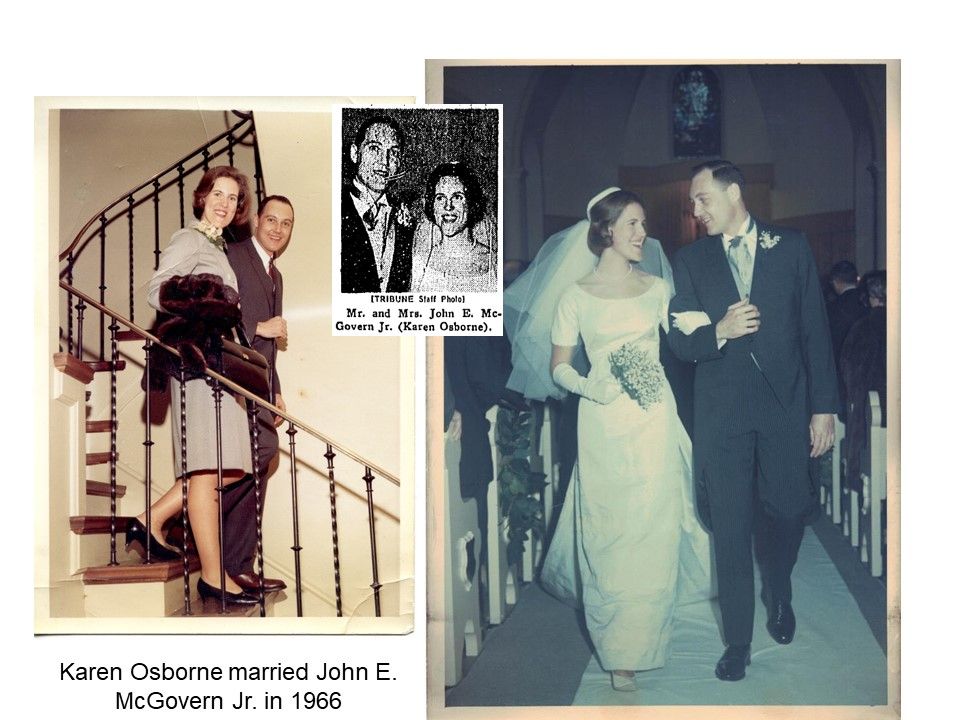
Karen married John Edward McGovern Jr. in 1966 at St. Patrick’s Church, with the reception at the Onwentsia Club.

Through the years, an important institution in the lives of the Armour family was St. Luke’s Hospital in Chicago (later Rush Presbyterian, now Rush University Medical Center). The family’s involvement began in 1914, when A. Watson Armour underwent an operation there, announced in the newspaper with the wonderful headline “Watson Armour Under Knife.”
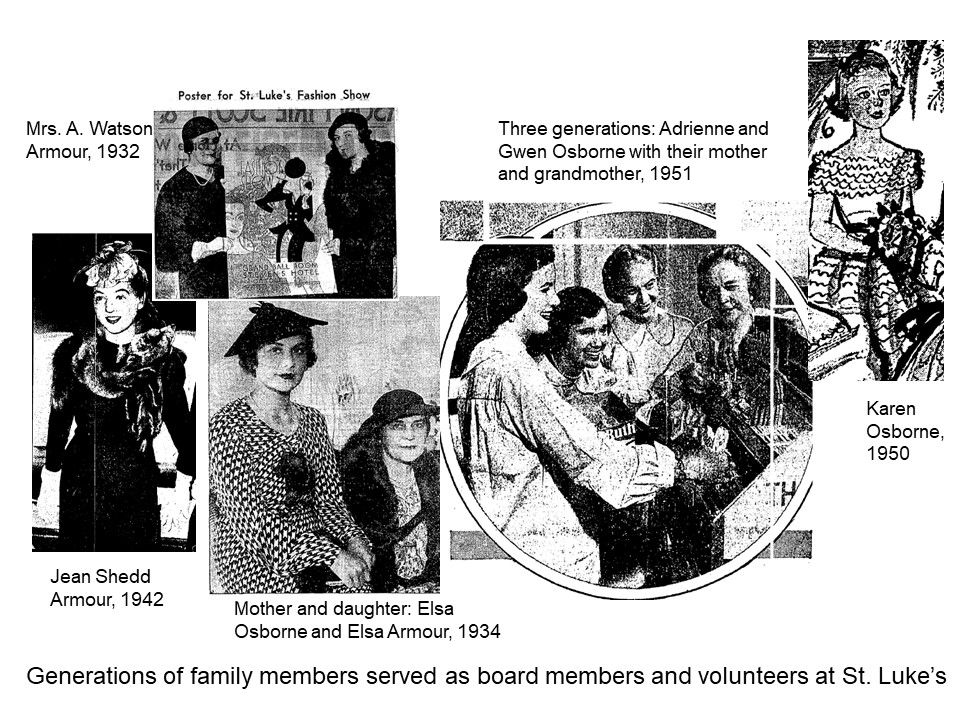
Generations of family members served as board members and volunteers at St. Luke’s, starting with A. Watson Armour, who was president of the board for ten years, and Elsa Armour, a member of the woman’s board for 55 years, and then proceeding down through the generations. The women of the family all worked as volunteers at the hospital, and many helped organize and participated in the renowned St. Luke’s Fashion Show benefit, which in 2016 just celebrated its 90th year. Many of the photos here are from the fashion show.

Elsa Armour Osborne, in particular, was often a model in the fashion show, and also modeled on an amateur basis for other events and cause as well; in fact, she was so noted for it that she was mentioned, among a few other Lake Forest women, in an article in the Tribune about professional models frustrated that North Shore girls were stealing their jobs and doing it for free.

Members of the third, fourth, and fifth generations of the A. Watson Armour family are still residents of the area. The family’s stewardship of the beautiful buildings and wonderful landscape at Elawa Farm through the first few decades of the 20th century has now come full circle, as several family members have been involved with the preservation of those buildings and that landscape in the 21st century through the Elawa Farm Foundation.